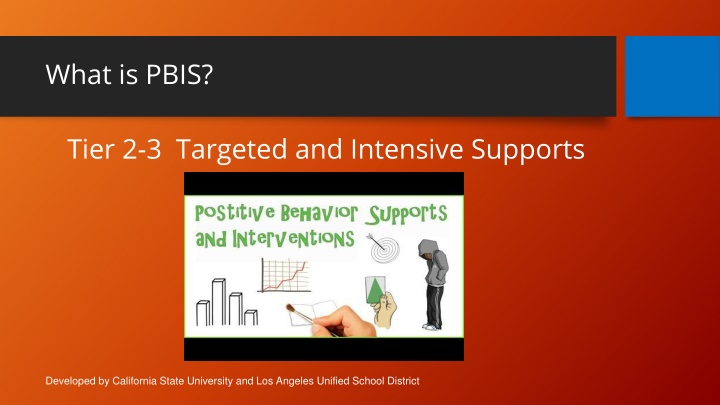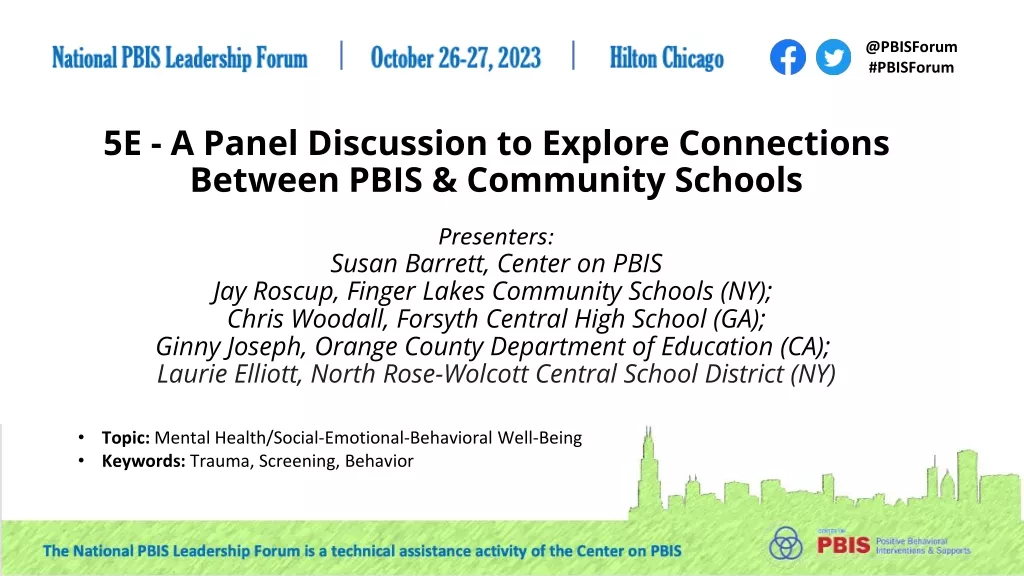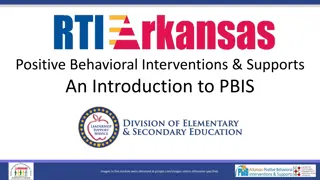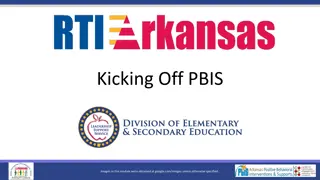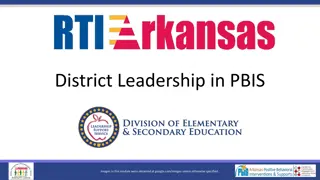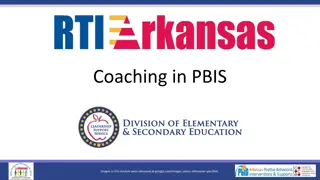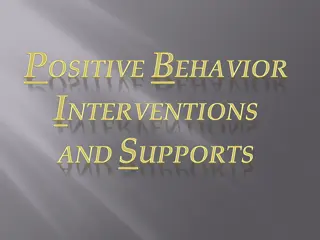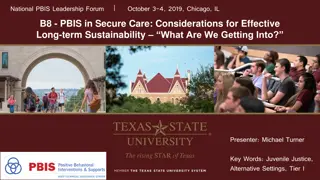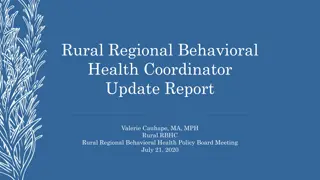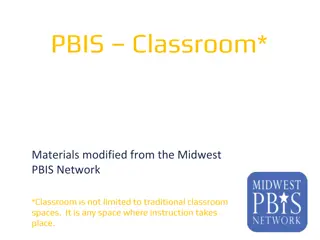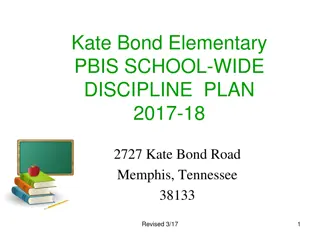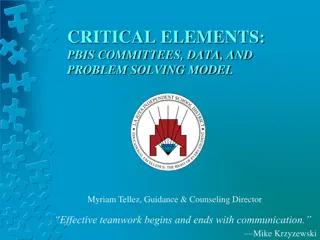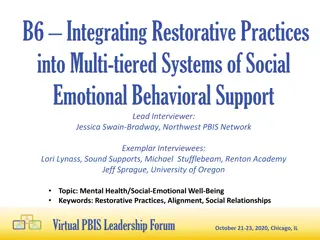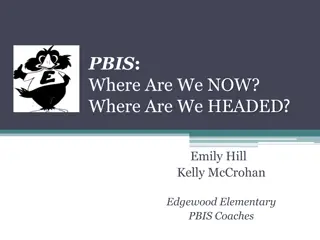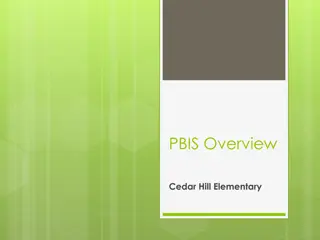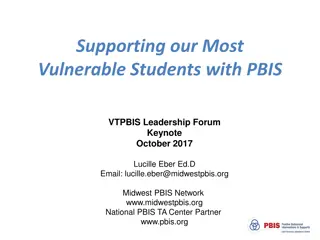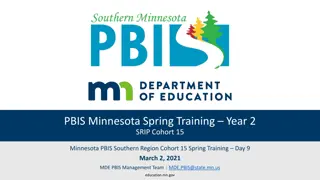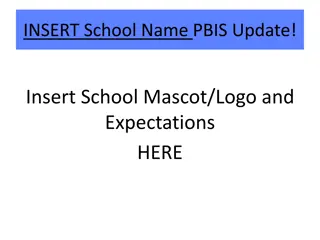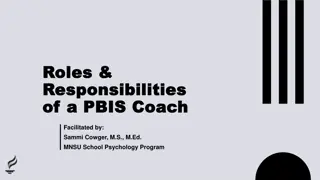PBIS Tier 2-3 Behavioral Intervention
Targeted at addressing specific behavior issues, PBIS Tier 2-3 provides focused small group interventions and intensive individualized support. Learn about behavior escalation cycles, strategies to prevent problems, teach alternative behaviors, and develop new skills for positive behavior support.
Download Presentation

Please find below an Image/Link to download the presentation.
The content on the website is provided AS IS for your information and personal use only. It may not be sold, licensed, or shared on other websites without obtaining consent from the author.If you encounter any issues during the download, it is possible that the publisher has removed the file from their server.
You are allowed to download the files provided on this website for personal or commercial use, subject to the condition that they are used lawfully. All files are the property of their respective owners.
The content on the website is provided AS IS for your information and personal use only. It may not be sold, licensed, or shared on other websites without obtaining consent from the author.
E N D
Presentation Transcript
What is PBIS? Tier 2-3 Targeted and Intensive Supports Positive Behavior intervention Supports (PBIS) Developed by California State University and Los Angeles Unified School District
Tier 2 involves focused and intensive small group interventions Tier 3 involves more intensive, individualized support Tier 3 Intensive Few Students Tier 2 Strategies for Some Students Tier 1 Strategies for All Students Universal
Common Cycle of Behavior Escalation FROM: The work of Geoff Colvin
Develop a plan and strategies 1.Prevent problems 2.Teach something different 3.Manage what happens after
Develop a plan and strategies: 1. Prevent problems Minimize negative situations Remove unnecessary distractions Front load the student- let them know the expectations in advance Provide enough time with activity Make difficult circumstances better Choices (order of task- menu options, listen to music while doing work, time) Be aware of your communication (tone, body language, and expressions)
Develop a plan and strategies 2. Teach something different What else can my student do to get what he or she needs that is more appropriate and just as effective? Replacement behavior has to be just as efficient and effective as the problem behavior
What can they do instead of the problem behavior? Screams when frustrated with an activity. Instead, will Ask for a break Divide tasks into smaller steps Hits when someone is playing with their toy. Instead, will Request the item, take turns, plan to use the item later
Teaching New Skills Teach through multiple examples Give frequent practice opportunities Provide useful corrections & lots of positive feedback Monitor for success Model expected behaviors
Here Are a Few More Strategies 1. 2. 3. 4. 5. Avoid using a question format Reduce Distance Reduce Loudness of Request Give a START request rather than a STOP request Make Non-emotional requests instead of Emotional requests Consistently Reinforce Compliance 6.
Develop a plan and strategies: 3. Manage what happens after Be calm, consistent, and specific. Positive Consequences such as earned privileges, reward systems are visual. Goal Monday Tuesday Wednesday Thursday Friday Complete classwork: Earns 5 minutes of free choice time. X X X X X
Activity Monica is not completing her work during math time. When it s time to do her independent work, she starts looking through her pencil box, walking around the classroom, and talking to her friends. Then she s unable to complete her work which makes it difficult for me to focus on the other students who are on-task. 1. What can you frontload to prevent the student from engaging in this behavior? 2. What strategy could you teach the student to replace the undesirable behavior? 3. What would you do to reinforce the positive behavior?
